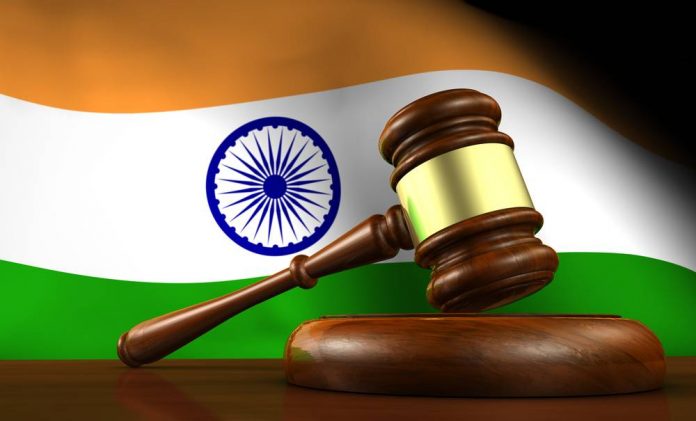This article is written by Arundhati Roy.
“Information is the currency of democracy” – Thomas Jefferson, 3rd President of the USA
Introduction
The Indian Parliament enacted the Right to Information in 2005 to empower the citizens by promoting transparency and accountability in the working of the Government. Right to information is part and parcel of freedom of speech and expression guaranteed under Article 19(1) of the Constitution of India; unaccompanied by data, the Fundamental Right of freedom of speech and expression cannot be used entirely by the citizens. The Right to information gives the citizens in its true essence the right to participate in the governance of its country.
Digital India Mission & E-governance
The Digital India Campaign was launched by Prime Minister Narendra Modi on 1st July 2015 with the aspiration to avail the government services to its citizens electronically by providing online infrastructure and enhanced internet connectivity. The primary intention behind the launch of this campaign is to empower the country in the domain of information technology digitally. An initiative of the Ministry of Electronics & Information technology for facilitating high-speed internet networks to rural areas to connect them with the entire world. Digital India Mission predominantly aims at promoting e-governance by incorporating digital infrastructure creation, digital delivery of services, and digital literacy for the citizens. Digital India Mission and e-governance are the two sides of the same coin.
RTI & E-governance
The introduction of the Right to information is a direction towards transforming India into a transparent society where citizens have a right to access the records of the Central Government and State Government authorities. RTI and e-governance are connected in such a way that e-governance cannot be fully achieved unless RTI Act is implemented fully; neither will the RTI prove to be efficacious if there isn’t a full-fledged system of computerization of the administrative work. Doubtless to say that for the successful implementation of various e-governance schemes, RTI is truly a boon. It works as an accelerator to take the e-governance move ahead in India.
As defined by the World Bank, the term “e-governance” denotes the use of information and communication technologies by government agencies (such as Wide Area Networks, the Internet, and mobile computing) that can transform relations with citizens, businesses, and other arms of Government. The preliminary step would be the publication of information about services on a website through which the citizens are enabled to interact with the site to download application forms or filing of complaints, pay electricity bills, filing the income tax return, renewing a license, or get to know more about the variety of services offered by the Government. The use of information technology is the essence for expediting the actual delivery of these services.
The Right to Information Act, 2005 has a progressive approach and seeks the implementation of Information technology to store the data efficiently to disseminate information. Section 4 of the Act itself emphasizes that “All public authorities maintain all its records duly cataloged and indexed in a manner and the form which facilitates the right to information under this Act and ensures that all records that are appropriate to be computerized are, within a reasonable time and subject to availability of resources, computerized and connected through a network all over the country on different systems so that access to such records is facilitated.” This provision has been specifically included in the RTI in order to provide e-governance to the citizens.
Online RTI facilities by the state governments
Till now, we have seen the nexus between the Right to information and e-governance. Now, to facilitate e-governance, the Central Government and the State Governments must set up websites for providing online RTI services.
The website established by the Central Government www.rtioline.gov.in for the citizens to enable them to file an RTI with just one click, approach the first appellate authority, check the status of their application online, approach the second appellate authority in case of grievance, or file a complaint when information has not been furnished, manifests that the Central Government has been able to implement the concept of e-governance efficaciously. Moving on to appraise the efforts taken by the various State Governments for the setting up of RTI portals, it can be said that the State governments have failed to imbibe the concept of e-governance as the websites provided by them are either not in working condition even if in existence, or the servers are down, or some of them even do not have their website for facilitating online RTI to the citizens. Moreover, the State Governments stand way behind compared to the Central Government when they both are evaluated in terms of equipping themselves with the desired infrastructure for the effective operation of the information technology. This pertinently implies that the State Governments have failed to comply with the provisions of section 4 of the RTI Act as well as non-observance of the Digital India Campaign.
Petitions for establishing RTI websites by states
In the year 2014, a petition was filed by Supreme Court lawyer Rajeev Agrawal, who had sought to set up a comprehensive website that upholds the spirit of the RTI Act, wherein citizens will be able to file RTI applications and appeals online in all the States. It was stated in the petition that “Most of the State Governments, Union territories, and State Information Commissions lack the facilities for entertaining RTI Applications/Appeals through electronic means.” In addition to this, the petitioner also said that “The implementation of provisions of RTI Act through Information and Communication Technologies (ICT) has innumerable benefits over and above the present format which includes a bulk of paperwork and that the applicant has to go here and there to post to seek the information.” It is to be pointed out that through the said petition, the citizens’ struggles due to the unavailability of RTI websites by the State Governments came to light.
Later on, a Recommendation Report was submitted by the Parliamentary Standing Committee on Personnel, Public Grievances, Law and Justice in the year 2015, which was taken into consideration by the Central Government. The report stated that “All departments must make an analysis of information which is sought most often from applicants and provide it on their website as suo-motu disclosure.” Accordingly, Central Government had called all its departments to make all the replies public that was provided by way of queries under the RTI Act by displaying them on respective Department websites.
After two years, in 2016, the Delhi High Court had passed an order in response to a writ petition filed by Rajeev Agrawal, who had submitted a representation to the Delhi Government and had sought for creating centralized RTI website having universal access point for submission of RTI request as well filing of 1st appeal online, payment of prescribed RTI fees thereupon through internet concerning every Public Authority functioning under Government of NCT of Delhi. Further, he demanded that a facility be created to upload the RTI application/appeal/complaint responses online in respect of every Public Authority functioning under the Government of NCT of Delhi. The petition also demanded constituting Call Centre as a voice facilitation Centre for filing RTI applications and appeals over the phone. The Delhi High Court took note of the submissions made, then asked the State Government to consider the demand for an online RTI mechanism within three months.
Recently, in 2019 notices were issued to the Central Government and State Governments by the Supreme Court of India on a Public Interest Litigation (PIL), which sought to direct all the States to establish online web portals for filing of inline RTI applications. The said PIL was filed by NGO Pravasi Legal cell through Advocate Jose Abraham. As per the petitioner NGO, the RTI regime can go one step further by having this online facility. It was then brought to notice by the Court that only the states of Maharashtra and Delhi have the online filing facilities of RTI applications. In case the NRIs wish to file RTI, they have to file the RTI applications physically. The petition highlights that the Central Government has set up an online RTI portal wherein even an NRI can file an application. In December 2013, the Central Government had asked the State Governments to initiate a similar online portal and issued directions to the National Informatics Centre (NIC) to extend necessary technical support.
In view of the above petitions, inference can be drawn that the citizens have taken various attempts to draw the State Governments’ attention that they need to establish online RTI portals. However, the State Governments seem to have taken no adherence to such orders passed by the Supreme Court or the High Court. Consequently, as the State Government fails to comply with not just the provisions of the RTI Act but also showed non-fulfillment of the orders of the Central Government for establishing online RTI portals, the present system which involves submitting the RTI application online and the corresponding reply from the concerned information officer physical consumes more time. This reduces the efficacy of the RTI mechanism, defeating the very purpose of its enactment.
Conclusion
It was quoted by the NGO Pravali Legal in its petition that “Right to information provides a legal mechanism to enforce and implement the citizen’s right to information guaranteed under Article 19(1) (a) and Article 21 of the Constitution of India.” The Right to information is considered revolutionary legislation that promises to bring about transparency and accountability in the administration of the Government. However, observing the current scenario, which depicts the harsh reality of the State’s online portals, the vision to achieve transparency and accountability in the working of the Government mechanism seems to be a far-flung dream. Even after making numerous urges to the State Governments to establish online RTI portals, they fail to take any action on it. It is the need of the hour to understand that RTI is a powerful tool in the hands of the citizens. The true objective of its legislation can be acquired only by providing timely response to citizens’ request for government information, which can be only attained by making the entire application and appeal process online not just by the Central Government but also State Governments.
From the given circumstances, the only conclusion that can be drawn is that the very objective for which the RTI was enacted couldn’t be achieved so far to a greater extent. Moreover, the failure of the States to implement the RTI to its full extent not only portrays its inability but also directs our attention towards the non-feasance of the Digital India Campaign, which aimed at empowering the country digitally by strengthening the online operation of the government mechanism. The State Government needs to take rapid action in setting up online RTI portals to achieve its true purpose and provide e-governance to its citizens. It should not be forgotten that RTI and e-governance are interdependent; in the absence of one, the other cannot be achieved.
LawSikho has created a telegram group for exchanging legal knowledge, referrals and various opportunities. You can click on this link and join:
 Serato DJ Crack 2025Serato DJ PRO Crack
Serato DJ Crack 2025Serato DJ PRO Crack











 Allow notifications
Allow notifications



